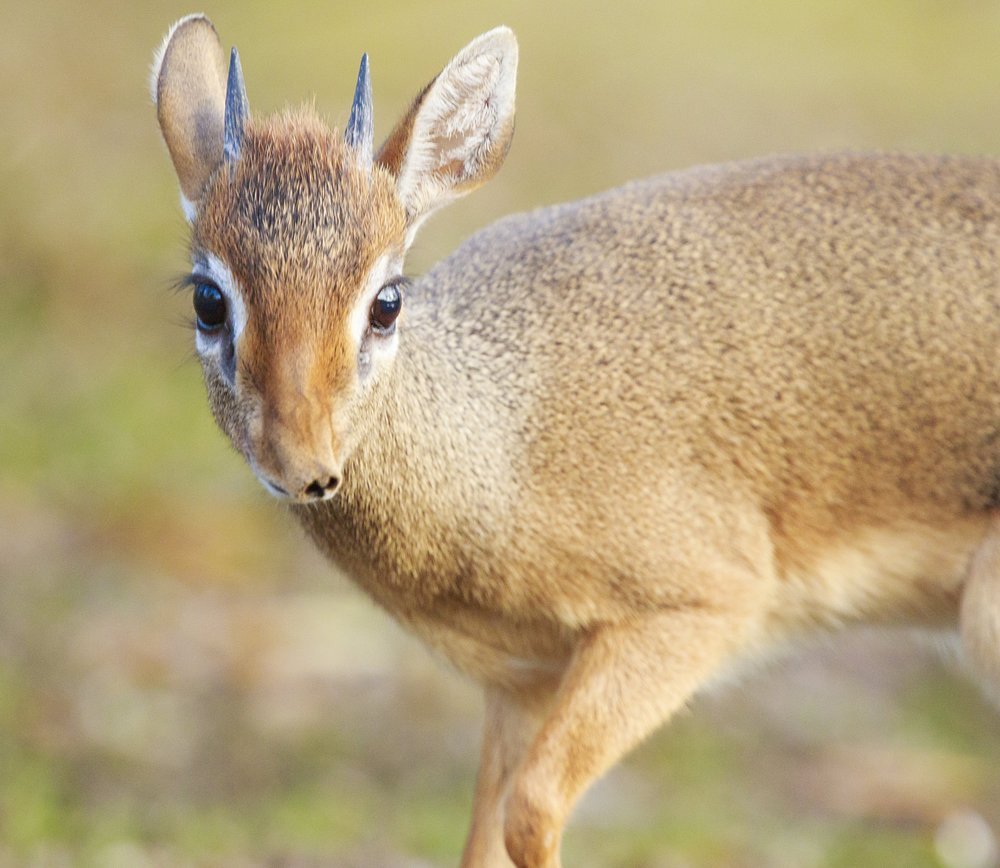
KIRK'S DIK-DIK
Madoqua kirkii
One of the four sub-species of Dik-dik; Kirk’s Dik-dik evolved 12 million years ago, they are small, speedy, nocturnal antelopes, reaching up to speeds of 42Kph with yellowish-grey to reddish-brown colouration with white on its belly. Males show small horns which can at times be concealed by a tuft of hair located on the animal's forehead. The most distinguishing feature of this particular species of Dik-dik is that its snout is particularly elongated into a proboscis. This proboscis is an adaptation for cooling that allows venous blood to cool by evaporation from the mucus membrane into the nasal cavity during normal breathing or under great heat stress from nasal panting.
Fear’s in the name….
Dik-diks are shy and elusive most of the time. When startled, these small mammals will take off, displaying the most spectacular series of zigzag leaps whilst calling "zik-zik" or "dik-dik,", hence their common name Dik-Dik. They use definite pathways when travelling through their territory. Their population density is approximately 24 adults per square kilometre, marking their individual territories through a process called the "defecation ceremony." The male then remains the defender of the territory; females are not capable of maintaining a territory by themselves.
Distribution and habitat
The Dik-diks’ unique body cooling system provides them with the ability to inhabit a wide range of arid scrubland forests, spreading through two regions of Africa; East Africa covering southern Somalia to central Tanzania and Southern Africa covering northern Namibia entering parts of south-western Angola.
Threats
Kirk’s Dik-dik are not currently facing any major threats to compromise their current high numbers and widespread populations. Aided by animals which inhabit the same geographic range, such as Kudu and Zebra. These species provide an abundance of ideal food sources for Dik-dik unconsciously through their natural behaviors and individual diet preferences.
However, some populations do face threats which could lead to a decline in numbers; Habitat loss, hunted for their skin, predation (leopards, cheetahs, jackals, baboons, eagles, and pythons)and they are viewed as a pest species for hunters targeting larger animals.


